Nursing Informatics: Analyzing Simulation, Virtual Worlds, and Gaming
VerifiedAdded on 2021/04/16
|5
|902
|46
Report
AI Summary
This report delves into the application of simulation, virtual worlds, and gaming within nursing informatics. It highlights the benefits of simulation, such as enhancing skill acquisition and improving patient outcomes through techniques like computerized manikins and role-playing, while also acknowledging the associated high costs and potential for a disconnect from real-life scenarios. The report then explores virtual worlds, exemplified by platforms like 'Second Life,' as tools for immersive learning and interaction among educators, students, and patients, and discusses their limitations, including cost and the challenge of translating virtual experiences into practical skills. Finally, the report examines the use of gaming in nursing education, emphasizing its potential to boost knowledge retention, promote problem-based learning, and enhance critical thinking, while also considering the challenges of decreased attention spans and the costs associated with implementation. The report concludes by providing relevant references to support its findings.
1 out of 5
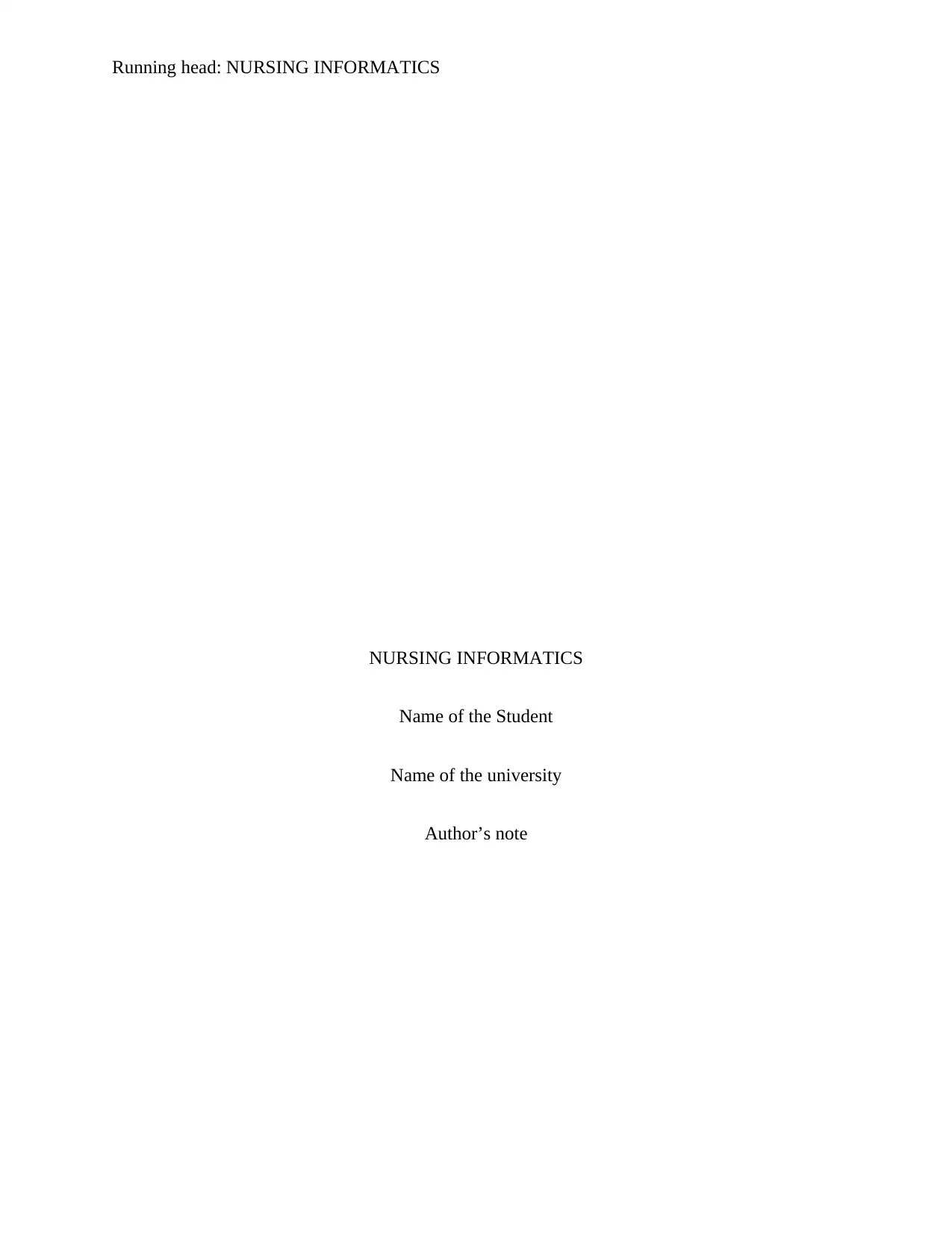
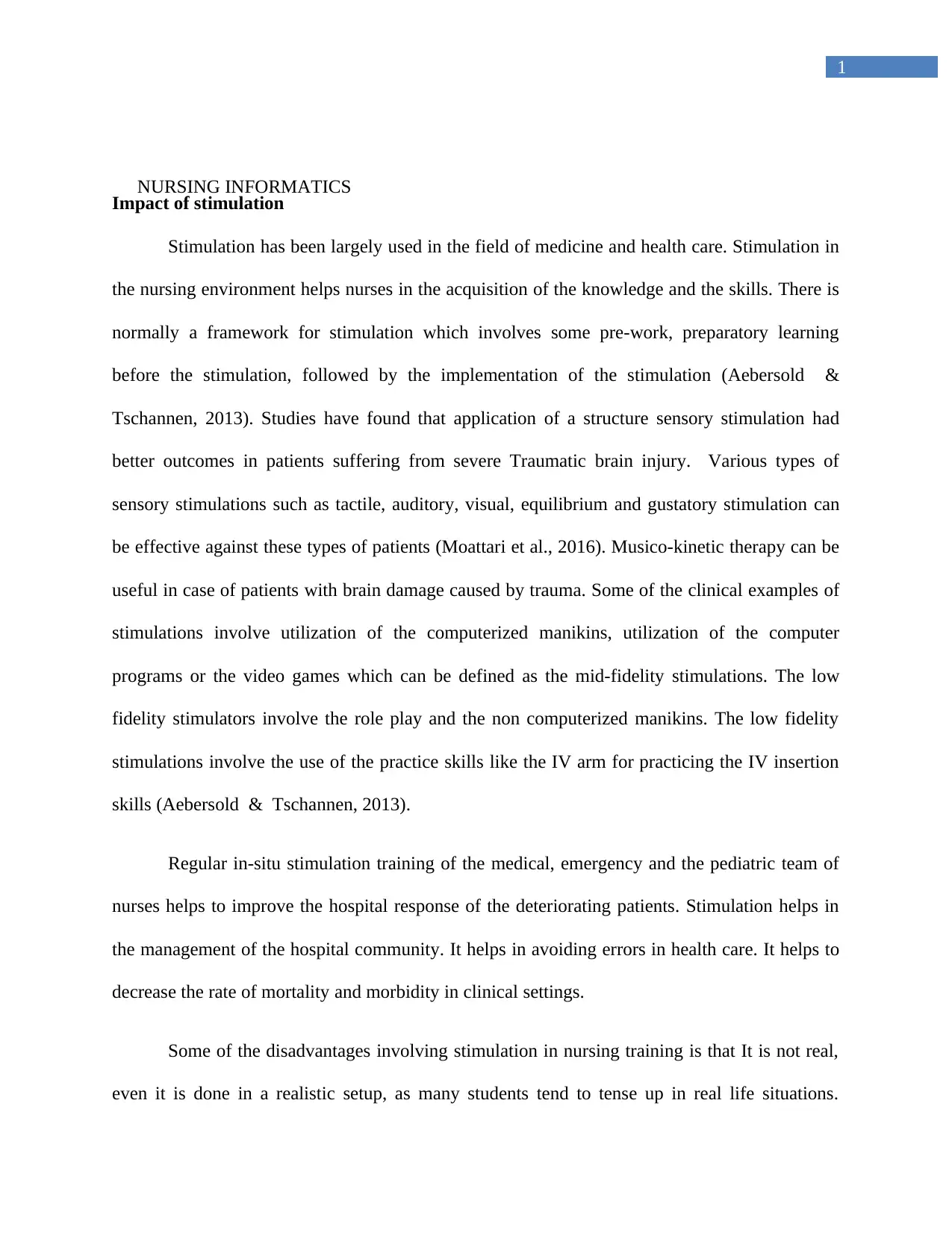
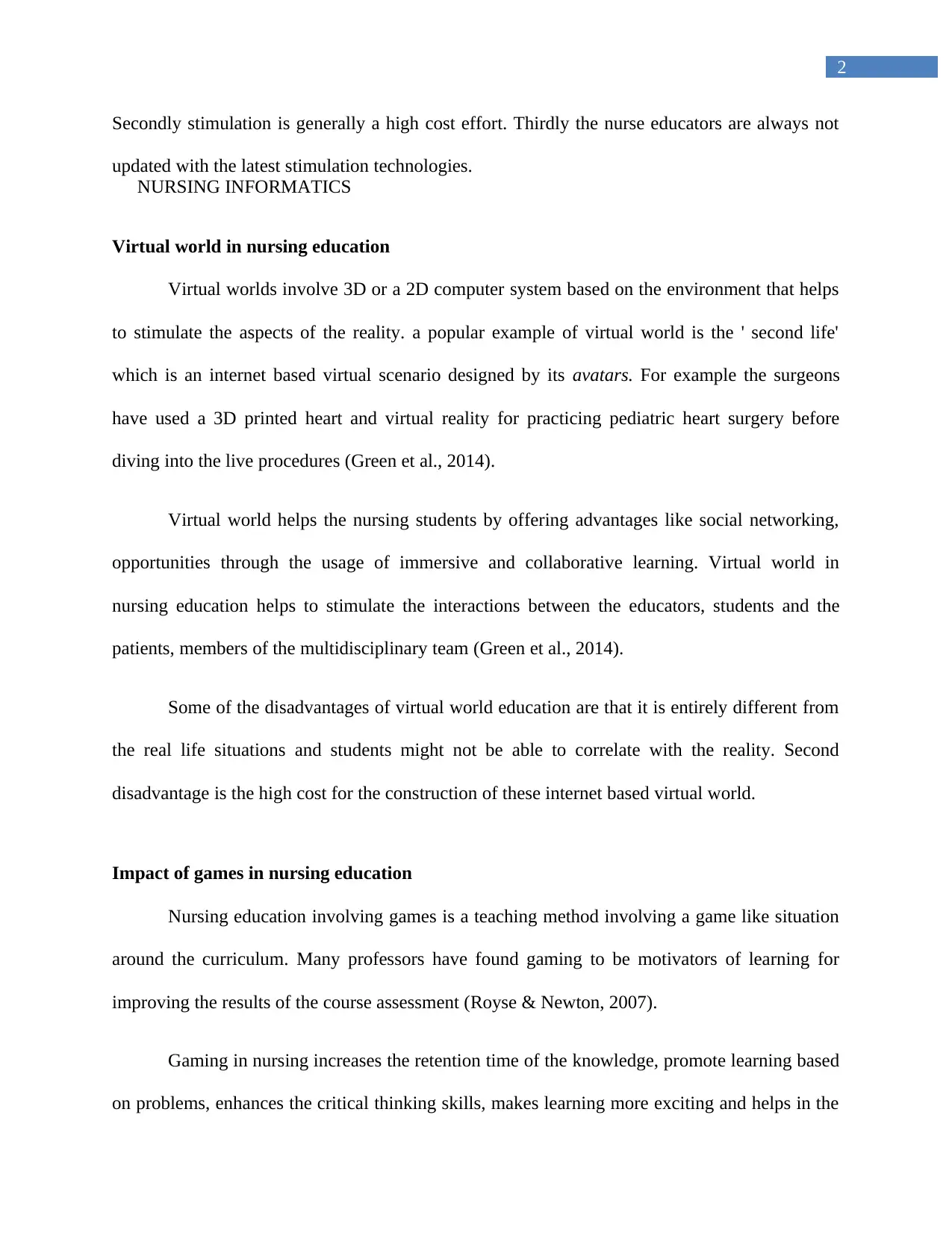

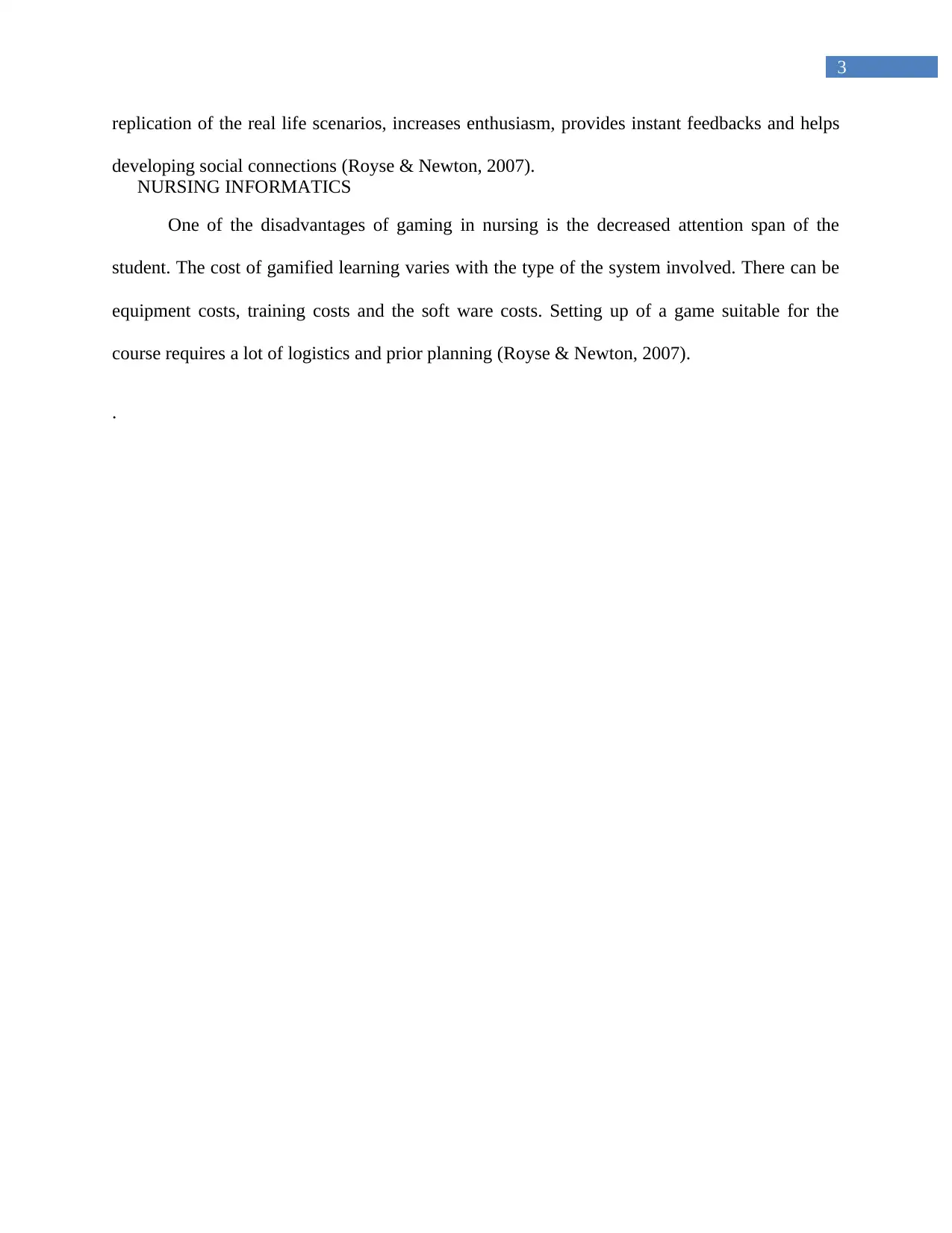
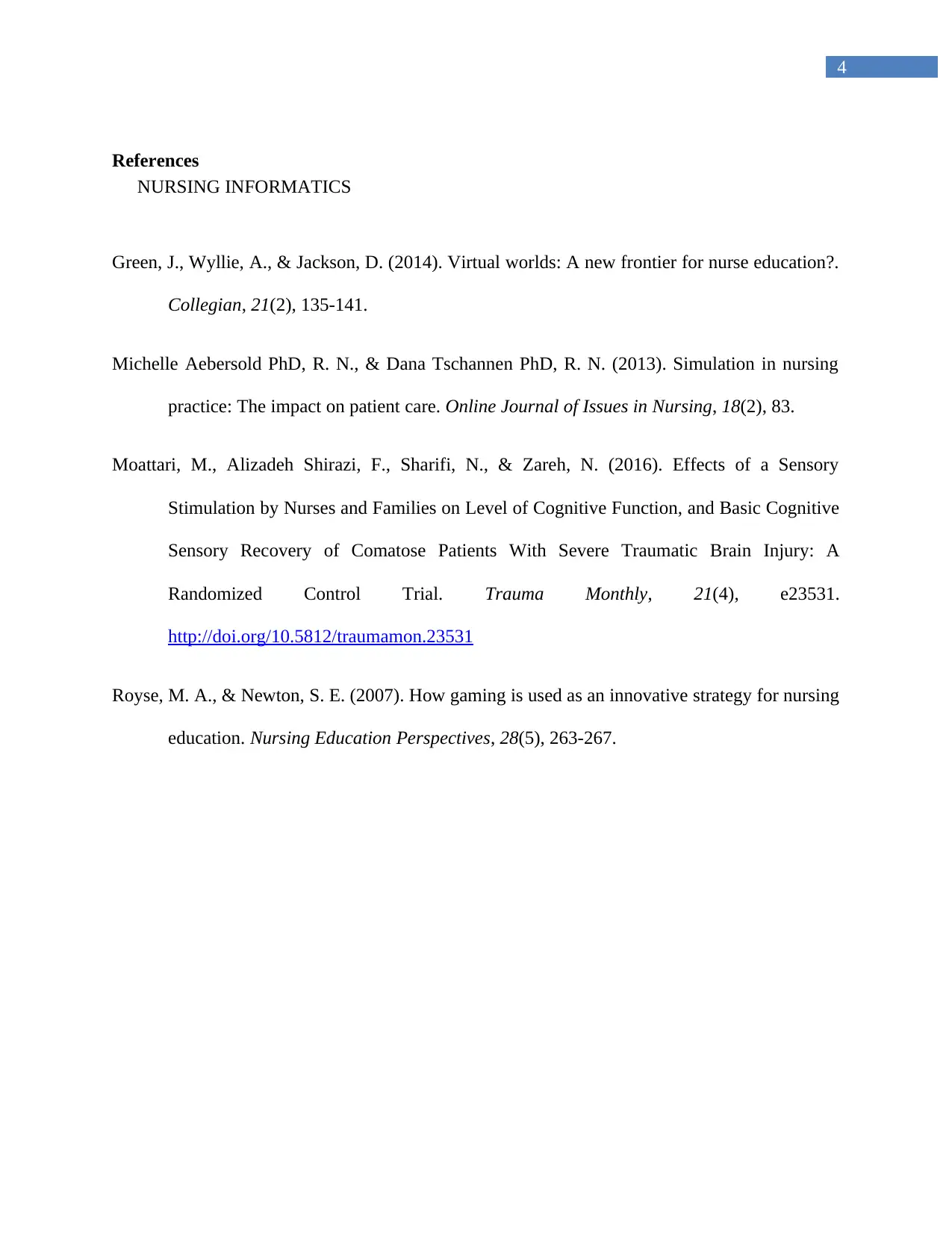
![[object Object]](/_next/static/media/star-bottom.7253800d.svg)